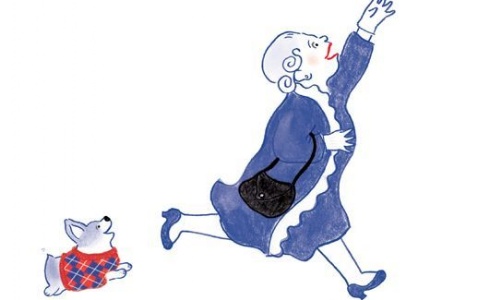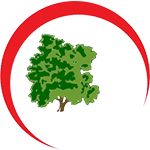Year 1 & 2 June 22nd Week 4


Big Talk
Read the story starter and then talk about the questions below…
Lucy had only planted the seed minutes earlier. Now, it was growing in front of her eyes! The earth began to tremble as the sunflower grew thicker and thicker, taller and taller.With no sign of stopping, the plant seemed to be reaching up towards the sun. She held on tightly, not daring to wonder where she might be swept off to…
Where will the magic sunflower take Lucy?
If you were Lucy, would you hold on to the sunflower or let go?
How did Lucy acquire the seed?
These sentences are ‘sick’ and need help to get better. Can you help make them better by adding some interesting adjectives and adverbs?
The girl grabbed on the sunflower. The plant went up into the sky.
Phonics
Year 1
Have a go at playing https://www.phonicsbloom.com/uk/game/odd-and-bob?phase=4
Read the words and then decide if they are real or fake words.
Can you read these compound words? Compound words are formed when two or more words are joined together to create a new word that has an entirely new meaning. For example, “sun” and “flower” are two different words, but when fused together, they form another word, Sunflower.
If you are confident at reading them then you could try and put them into sentences and even write them into sentences. For example- I saw a starfish on the beach.
Year 2
This week we would like you to think about apostrophes for possession. An apostrophe can be used to show that one thing belongs to or is connected to something. This is called a possessive apostrophe. Here are some useful videos to watch-
https://www.youtube.com/watch?v=sueh1OKXp78
https://www.bbc.co.uk/bitesize/topics/zvwwxnb/articles/zx9ydxs
Can you re-write these sentences using an apostrophe for possession?
My mum has lost her keys. (Mum’s keys are lost).
The boy has a ball which bounces really high.
The coat that belongs to Tom is hanging up.
We all like playing with the dog that belongs to Jack.
The kittens that belong to Emily are very cute.
There is also a worksheet you can complete at the bottom of the blog.
Maths – Position and Direction
This is great thing to learn practically by setting up obstacle courses and going on treasure hunts! Here are some videos to watch and at the bottom of the blog are some learning screens you can go through for Year 1 and Year 2.
https://www.bbc.co.uk/teach/supermovers/ks1-maths-position-&-direction/zhh9scw
https://www.bbc.co.uk/bitesize/topics/z2grd2p/articles/zwv6b82
Here’s a link to a great game - https://pbskids.org/peg/games/hungry-pirates
Year 1
In Year 1 children learn to use mathematical vocabulary to describe position, direction, and movement. This will include language such as above, left, and right.
They should make and identify turns, including whole, half, quarter, and three-quarter turns.
Play ‘find the object’ games
Try to find everyday opportunities to use the language of position, direction, and motion. For example:
Left, right, top, middle, bottom, on top of, in front of, above, between, around, near, close and far, up, down, forwards, backwards, inside and outside.
You could play a game with your child by hiding an object around the house for them to find. Encourage them to ask questions using the language mentioned above. For example:
‘Is the object hidden inside a drawer?’
‘If I move backwards, will I be closer to the hidden object?’
Encourage your child to make or identify whole, half, quarter, and three-quarter turns in both directions. This will help them to understand angles, which are measurements of how much something turns.
Year 2
In year 2 children need to be able to use the language of position, direction, and motion, including:
Left, right, top, middle, bottom, on top of, in front of, above, between, around, near, close, far, up, down, forwards, backwards, inside, outside, north and south.
You could also play a game outside where your child is blindfolded and you have to direct them towards a given location. Use commands like ‘Turn left and walk three steps forward, then make a half turn clockwise’.
Help your child to understand whole, half, quarter, and three-quarter turns both clockwise and anti-clockwise. It may be useful to connect clockwise and anti-clockwise with the movement on a clock face. This will help them in their understanding of angle, which is a measurement of how much something turns.
Topic / English – The Queen’s Hat

Here is the story read by the author Steve Anthony https://www.youtube.com/watch?v=6Q8MQPVq_vg
Then you could…
- Create a newspaper article about the day the Queen’s hat flew away
- Retell the story from the point of view of the Queen. Today my hat flew away…
- Think of some speech / thought bubbles for the characters in the illustrations
- If you could meet the Queen, what questions would you ask her? How might she respond?
- Make a list of the verbs used in the story. How does the author describe the movement of the hat as it flies away? A verb is a word used to describe an action, state or occurrence.
https://www.bbc.co.uk/bitesize/topics/zrqqtfr/articles/zpxhdxs
- Can you find any examples of onomatopoeia in the story? Could you come up with your own list? Onomatopoeia is a word which sounds like what it means. 'Thud', 'crash', 'bang' and 'buzz' are all examples.
https://www.youtube.com/watch?v=FBQCgjo1QTU
https://www.bbc.co.uk/bitesize/topics/z4mmn39/articles/z8t3g82#:~:text=Onomatopoeia,Start%20activity
- Make your own story with a similar title, e.g. The Queen’s Shoes or The Queen’s Handbag (Year 2 don't forget to use apostrophes for possession!)
- Could you perform (or record) your own read-along version of this book?
- Write a letter to the Queen asking her questions
- Complete a reading comprehension (see below)
Topic / History
Following on from the story can you learn any facts about our Queen- Queen Elizabeth II? Below are some resources you might find useful. Then you could…
- Make a timeline that shows the main events in the Queen’s life
- Write a fact file about Queen Elizabeth II
- Can you make a poster that shows the kings and queens of England?
Topic / Art
Watch this video of the Queen and her many hats https://youtu.be/c6My5EJ9Ix8
- Can you design a new hat for the Queen?
- The illustrator in The Queen's Hat has used a limited range of colours in the illustrations. Can you see what they are? Can you create your own picture using only these colours?
- A picture of the Queen’s head appears on stamps. Could you design a new stamp? (See template below)
- Can you create your own illustrations of the places mentioned in the story (There's a map below)
Science
This week on Developing Experts there is a lesson on- Know how to keep healthy through diet. The mission assignment is to keep a food diary for three days. You could write this down or draw pictures to show what you eat.
The Science Behind the Science
Humans and animals require a balanced diet to get the appropriate levels of nutrients that the body needs to function properly. Food provides the energy that living things need to survive and can be physically or chemically digested so that it is appropriately absorbed into the blood stream. There are three main energy sources: carbohydrates, fats and proteins. Carbohydrates are made from simple sugars such as glucose and provide a high energy source. Fats are made from fatty acids and glycerol and are also a high energy source.
Proteins are made from amino acids and its main uses are growth and repair. If there is an insufficient amount of carbohydrates and fats in the diet, proteins are used as an ‘emergency’ back up source. During adolescence, individuals are growing quickly and require a lot of protein. If you get an insufficient amount of protein in your diet you can develop protein deficiency. This can then lead to a disease called kwashiorkor, which causes a swollen abdomen. This is more common in developing countries.
A balanced diet will also require nutrients that don’t necessarily provide energy. The most important ones are: water, minerals, vitamins and fibre. Water aids with electrolyte imbalance, regulates body temperature, avoids dehydration, helps to lubricate and cushion the joints as well as getting rid of waste products through urination, stool and perspiration.
Minerals such as iron help to make haemoglobin. Calcium is the key for healthy bone and teeth development and plays a role in muscle contraction, and the release of hormones. Vitamins are also vital for the normal functioning of the body. Here are a few examples: Vitamin C prevents scurvy. Vitamin D is important for calcium absorption and bone growth and prevents Vitamin D deficiency and rickets (weak or soft bones in children). Vitamin B is useful in aiding carbohydrate, fat and protein synthesis as well as hormone production.
Fibre is also important. It helps to normalise bowel movements, maintain bowel health, lowers cholesterol levels and helps to control blood sugar levels. It is important to maintain a balanced diet to avoid further health complications. If you eat too much and exercise too little you may become overweight. Overweight people have an increased chance of suffering with diabetes, arthritis, heart disease, cancer, to name a few.


